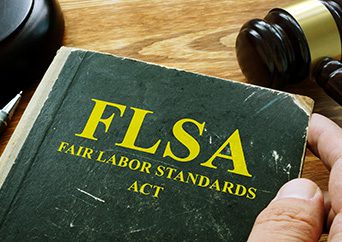Individuals who are enrolled in high deductible health plans (HDHPs) have access to Health Savings Accounts (HSAs), a popular type of tax-advantaged medical savings account. Individuals can use their HSAs to pay for expenses covered under the HDHP until their deductible has been met, or they can use their HSAs to pay for qualified medical expenses that are not covered under the HDHP, such as dental or vision expenses.
HSAs provide a triple tax advantage—contributions, interest and earnings, and amounts distributed for qualified medical expenses are all exempt from federal income tax, Social Security/Medicare tax and most state income taxes. Due to an HSA’s potential tax savings, federal tax law includes strict rules for HSAs, including limits on annual contributions and HDHP cost sharing.
This Compliance Overview summarizes key features for HSAs, including the contribution limits for 2023.
Annual Limits
- The 2023 contribution limit is $3,850 for individuals with self-only HDHP coverage and $7,750 for individuals with family HDHP coverage.
- Individuals who are age 55 or older may make an additional $1,000 “catch-up” contribution.
- For 2023 plan years, the minimum deductible is $1,500 for self-only HDHP coverage and $3,000 for family HDHP coverage.
Changes for COVID-19
In response to the COVID-19 crisis:
- Over-the-counter drugs and menstrual care products are qualified medical expenses that can be paid for by an HSA on a tax-free basis.
- HDHPs may pay for certain benefits, including COVID-19 testing and treatment and telehealth services, before the deductible is reached.
Links and Resources
- IRS Publication 969, Health Savings Accounts and Other Tax-favored Health Plans.
- IRS Rev. Proc. 2022-24, which includes the inflation-adjusted HSA limits for 2023.
- COVID-19 Guidance: IRS Notice 2020-15, the CARES Act and the FFCRA.
HSA Key Features
| OVERVIEW | |
| Account Description | Tax-exempt trust or custodial account established by an eligible individual to pay for qualified medical expenses. |
| Changes Related to COVID-19 Pandemic |
The following changes related to the COVID-19 global pandemic impact HSAs:
Effective March 18, 2020, the Families First Coronavirus Response Act (FFCRA) requires group health plans and health insurance issuers to cover COVID-19 testing without imposing any cost sharing (such as deductibles, copayments or coinsurance) or prior authorization or other medical management requirements. IRS Notice 2020-15 confirms that HDHPs can pay for COVID-19 testing and treatment before plan deductibles have been met, without jeopardizing their status as HSA-compatible. |
| Annual Reminders for 2023 | New annual limits on contributions apply. Also, the minimum deductible and maximum out-of-pocket expense limit for HDHPs increases for plan years beginning on or after Jan. 1, 2023. The catch-up contribution amounts for HDHPs remain the same. |
| Potential Tax Benefits for Employees |
|
| EMPLOYEE ELIGIBILTY | |
| Who May Participate |
An individual is eligible to establish and contribute to an HSA if he or she:
|
| HDHP Coverage Required |
HDHP coverage is required. For 2023, the minimum annual deductible is $1,500 for self-only coverage or $3,000 for family coverage. The maximum deductible and other out-of-pocket expenses (excluding premiums) is $7,500 for self-only coverage or $15,000 for family coverage. Non-grandfathered HDHPs must also apply the self-only cost-sharing limit for coverage of essential health benefits provided in network ($9,100 in 2023) to each individual covered under the plan, even if this amount is below the family deductible limit. |
| CONTRIBUTIONS | |
| Who May Contribute | The employee, the employer, or both may contribute (family members or any other person may also contribute). |
| Pre-Tax Employee Contribution Allowed | Yes, contributions can be made through employee salary reductions under a cafeteria plan. |
| Limit on Contributions | Yes, there are limits on how much can be contributed to an HSA each year. For 2023, the maximum contribution is $3,850 for self-only coverage or $7,750 for family coverage. The limit is increased by $1,000 for eligible individuals age 55 or older at the end of the tax year. |
| Employer Participation | Employer contributions made through a cafeteria plan are subject to the Section 125 nondiscrimination requirements. All other employer contributions are subject to the “comparability rules,” meaning that the employer must make comparable contributions to all comparable participating employees’ HSAs. |
| DISTRIBUTIONS | |
| Distributions Allowed | Distributions used exclusively to pay for qualified medical expenses of the employee and his or her spouse and dependents are tax-free.
Any distribution amount not used exclusively to pay for qualified medical expenses is included in the employee’s gross income and may be subject to an additional 20% tax. Note: Employees who cover dependents to age 26 under an HDHP may not use HSA funds for reimbursement on a tax-free basis for an adult child’s medical expenses, unless the adult child qualifies as a tax dependent of the employee. |
| Timing of Distributions | An employee may receive distributions from an HSA at any time for qualified medical expenses not reimbursed by the HDHP; however, expenses incurred before an HSA is established are not considered qualified medical expenses.
Employees do not need to meet the HSA eligibility criteria in order to receive a tax-free distribution from their HSAs. Also, an employee’s spouse and dependents do not have to be HSA-eligible in order to have their qualifying medical expenses reimbursed on a tax-free basis. |
| Qualified Medical Expenses | Generally, qualified medical expenses are those expenses paid for “medical care” as defined in Internal Revenue Code Section 213(d). Health insurance premiums are generally not considered qualified medical expenses for HSA purposes, unless the premiums are for:
Medicare and other health care coverage if the employee is 65 or older (other than premiums for a Medicare supplemental policy, such as Medigap). |
| OTHER ISSUES | |
| Balance and Carryover | Amounts remaining in an HSA at the end of the year are generally carried over to the next year. |
| Account Subject to COBRA | No. |
| Portability | Yes, the employee is the owner of the account. |
Material posted on this website is for informational purposes only and does not constitute a legal opinion or medical advice. Contact your legal representative or medical professional for information specific to your legal or medical needs.



